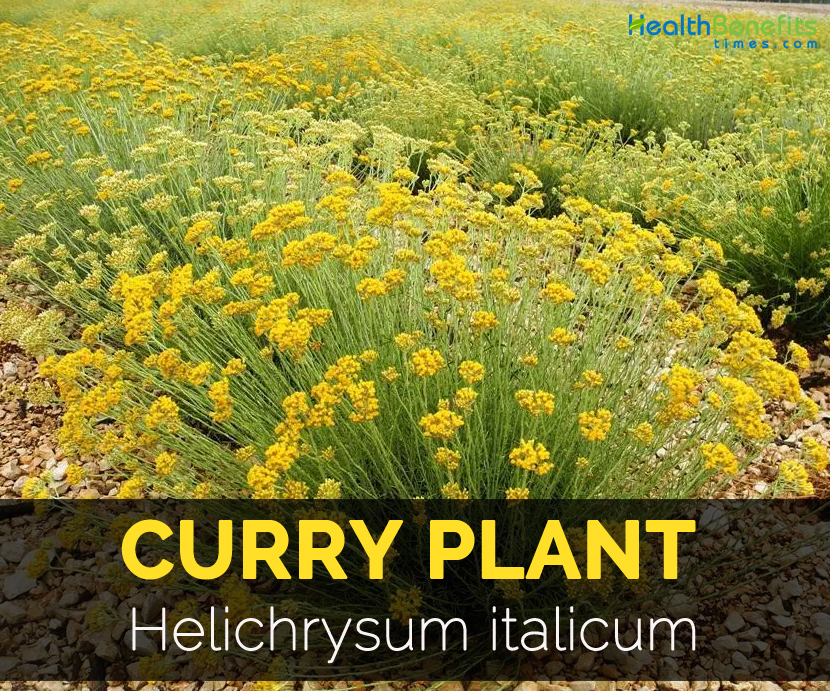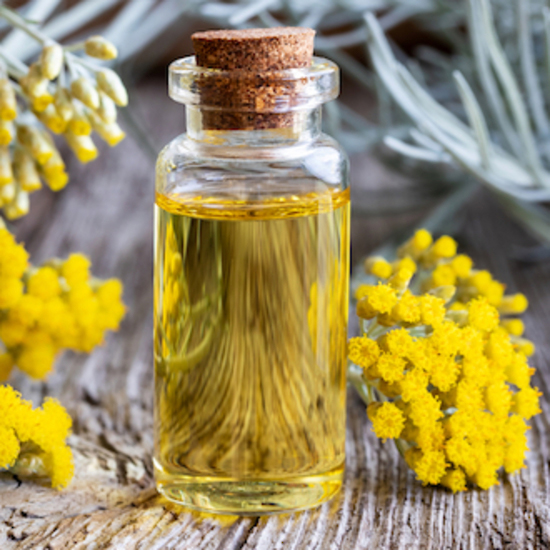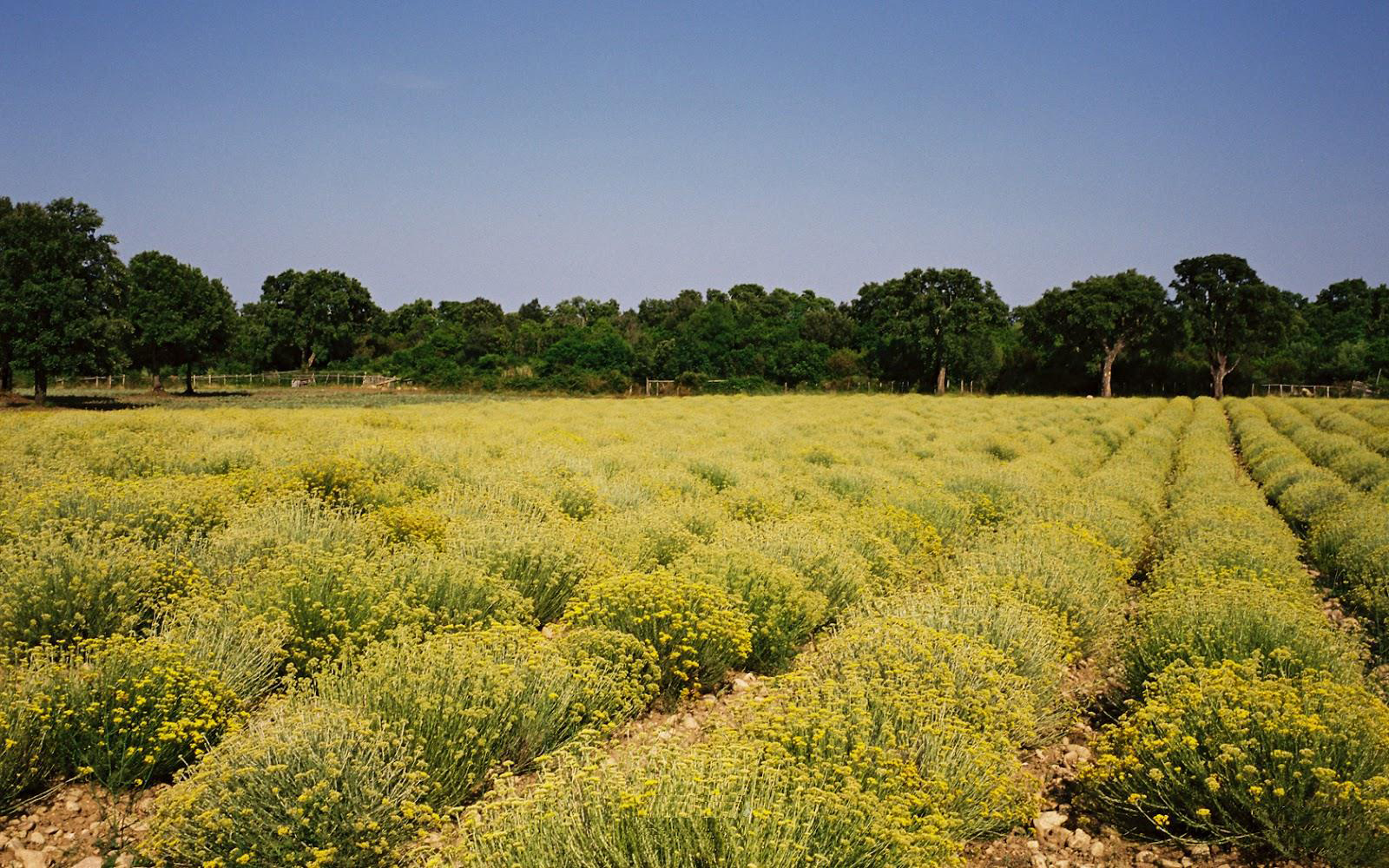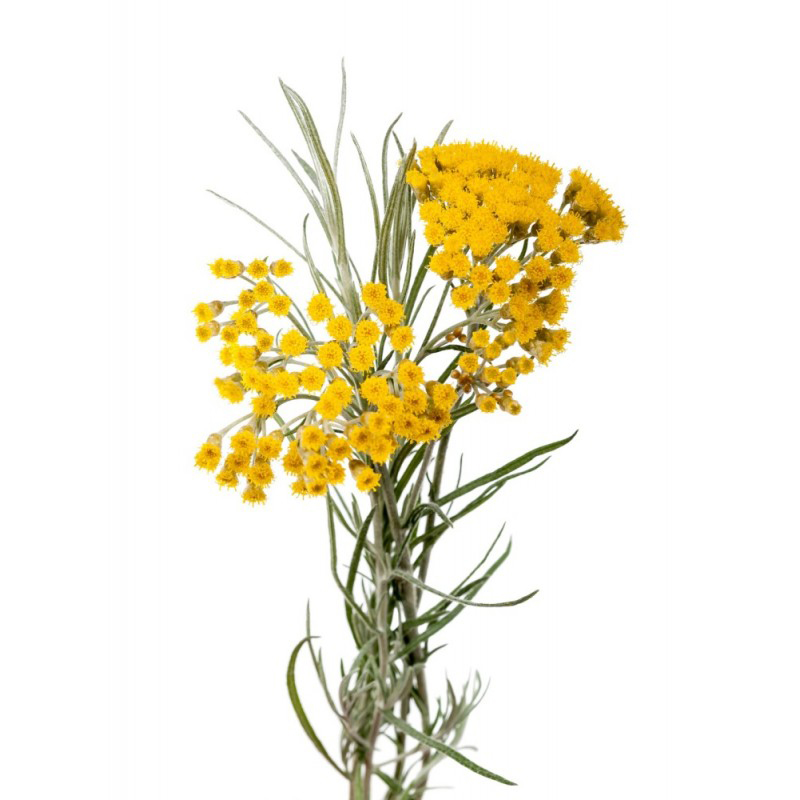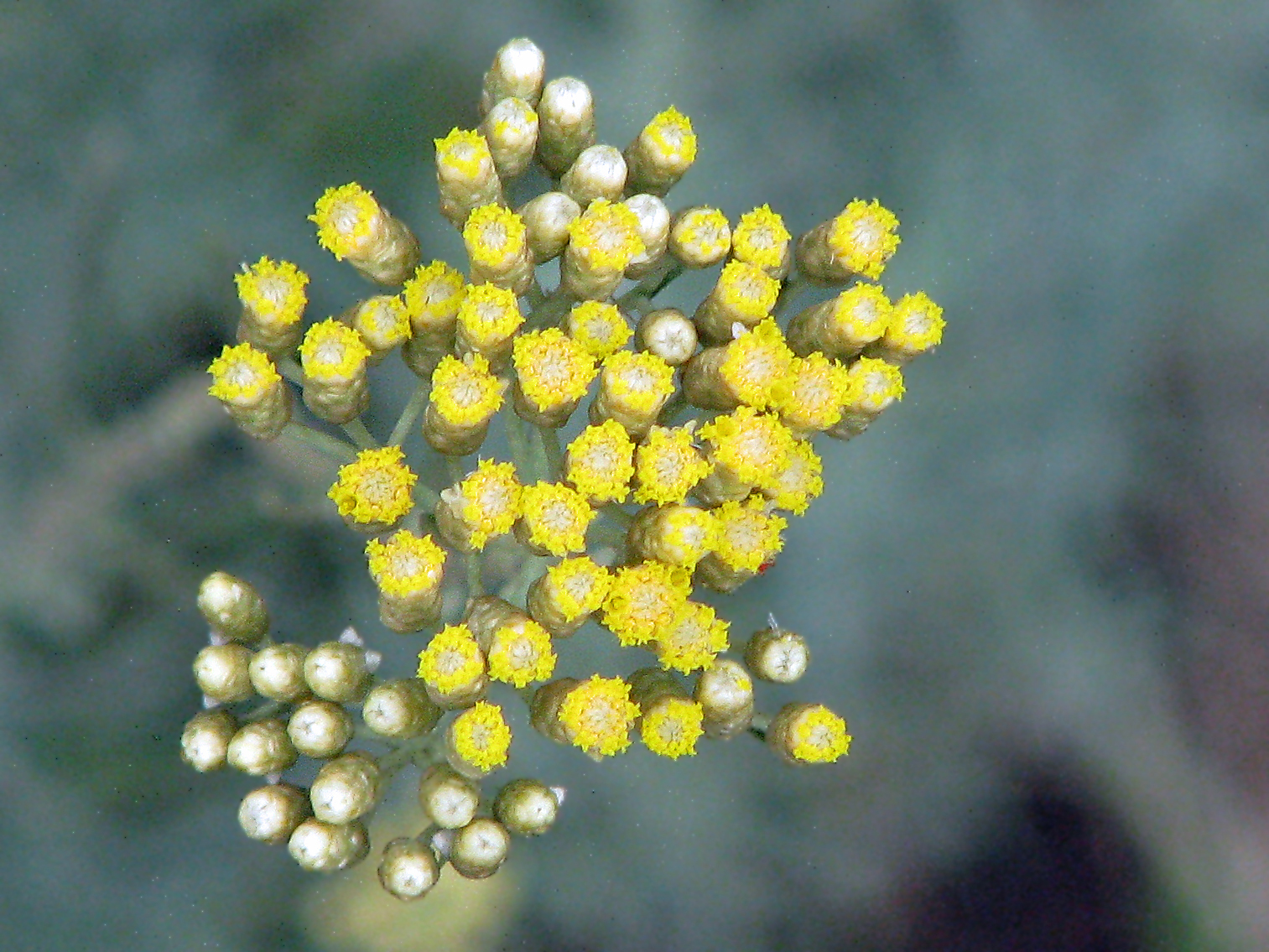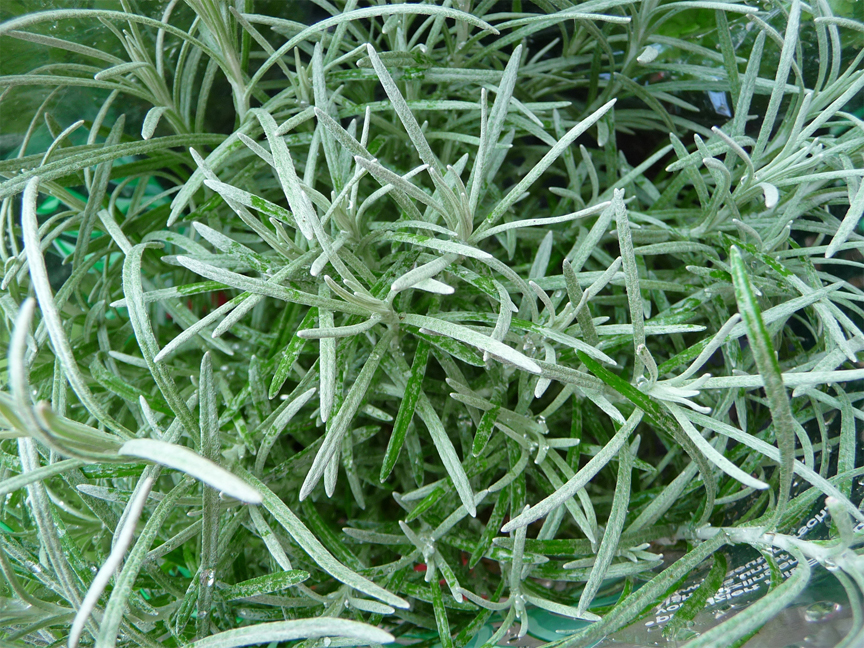Health Benefits of Helichrysum oil
- Skin health
Helichrysum is antiseptic and antimicrobial which is helpful to cure wounds. It speeds up healing of cuts and wounds and also reduces scarring. The oil helps to lower appearance of bruising. It possesses strong emollient properties and provides smooth and soft skin.
- Blood health
Helichrysum essential oil has anticoagulant properties that prevent artery blockages by preventing blood for thickening. It crashes the blood clots by stimulating enzymes that dissolve clots. Use it with ylang-ylang essential oil to reduce blood pressure.
- Inflammation and fever
Helichrysum provides anti-inflammatories that help to soothe muscle tension and provide relief from headaches especially migraines. It also lowers aches related with fever.
- Healthy heart
Helichrysum essential oil effectively treats irregular heartbeat and heart palpitations. It also prevents and treat stroke.
- Respiratory health
Antitussive properties found in Helichrysum provide relief from coughs caused due to excess phlegm. It is an expectorant which eliminates phlegm and prevent the buildup of new phlegm. It acts as a mucolytic that helps to thin mucous and prevents hardening and clogging of respiratory tracts. It also clears coughs which resist other treatments.
- Prevent microbes
Helichrysum essential oil acts as an antioxidant. The study conducted on 19 microbe species shows that out of them 16 species was effective from helichrysum and remaining three showed resistance to the oil. Staphylococcus aureus, Bacillus cereus, Micrococcus luteus, Enterococcus cereus, Staphylococcus epidermidis, Bacillus subtilis, Pseudomonas aeruginosa, Proteus mirabilis, Enterococcus faecalis, Fusarium solani, Candida albicans, Alternaria alternata and Ascochyta rabiei. K. pneumonia, E. coli, and L. Monocytogenes were the three microbe species which showed resistance.
- Prevents infection of liver & spleen cells
Helichrysum essential oil treats liver infections due to the presence of choleretic properties by promoting release of bile. Bile helps in digesting fat. Sesquiterpenes and monoterpenes helps to treat liver infections.
- Treatment for HIV
Helichrysum helps to treat AIDS which is a major life threatening disease. The study revealed that the extract of helichrysum has phloroglucinol alpha-pyrone arzanol which is an effective NF-KB inhibitor. It is alike compound homoarenol and alter hydroxylation pattern of aromatic moiety. Arzanol inhibits HIV-1 and replication of T cells, releases pro-inflammatory cytokines, stimulates synthesis of primary monocytes. The inhibition of T cell replication makes helichrysum effective to treat AIDS.
- Treatment for chronic cough
Yet another great health benefit of helichrysum oil is that it can treat chronic coughs. It helps to get rid of coughs. It is used for asthmatic congestion and also to prepare cough syrups.
- Prevent fungal infections
Helichrysum acts as antifungal agent which is effective for C albicans, S cervisiae, F solani, and A alternate. Apply it topically on infected area mixing with other carrier oil such as coconut oil and olive oil to prevent fungal infection from spreading.
Medicinal uses
- It is helpful for treating wounds, gall and bladder disorders.
- Its anti-inflammatory properties make it beneficial for respiratory tract and skin conditions.
- Flowers and leaves is used for cough, colds, allergies, toothache, digestive disorders, liver and gallbladder disorders, infections, inflammation and sleeplessness.
- The herb is used for snake bites, women’s disorders and urinary problems.
- Typically, it is used to clean wounds, relieve colds, mild depression, nervous restlessness, bruises, skin problems and hemorrhoids.
- For the treatment of skin diseases, skin irritations or mild sunburns occasionally also ointments on the basis of Curry plant are used. The essential oils and flavonoids contained in the plant are responsible for the healing effect.
Uses of Helichrysum essential oil
- It can be used topically, aromatically or also internally.
- For aromatherapy, diffuse 2 to 3 droops of essential oil in a diffuser or mix few drops to the bath tub.
- For oral consumption, add 1 drop to 4 ounces of liquid. Use it with caution. As it is a potent essential oil, when used in excess it could be harmful.
- For topical application, mix 2 to 3 drops of helichrysum oil with carrier oil like jojoba oil or coconut oil.
- As inhalation, use diffuser or smell an open bottle. It is useful for emotion therapies or meditation.
Culinary uses
- Use the leaves as a flavoring agent in salads or cooked foods.
- It enhances the fruit flavors in sweets, baked goods, ice cream, chewing gum and soft drinks.
- Make a tea from flower heads.
- The oil helps to heal burned skin and chapped lips.
- It treats the symptoms such as fever and coughing.
- Apply it to skin as a moisturizer or use it to fade scars.
Side effects
- Helichrysum essential oil is not safe for eyes and inner ear.
- It may also irritate skin.
- Avoid it by lactation mothers and pregnant women.
- It also triggers stomach cramps so the people with gall stone problems should avoid it.
- People sensitive to ragweeds or Compositae family might be allergic to this plant as well.
- People with chances of internal hemorrhaging and who have undergone surgery should avoid it.
- Limit the consumption of Curry plant.
Other facts
- The shrub reaches two feet high and more than 3 feet in width.
- The leaves resemble the blend of rosemary and lavender leaves.
- The smell of curry plant is like fenugreek or maple syrup.
- Flowers incorporate both types of reproductive organs.
- The flower blooms from July to August.
- Flowers attract insects causing pollination.
- Fruit is an achene like cypsela which encloses a single seed.
- The plant could be propagated through cuttings or seed.
- Flowers are used to prepare dry floral arrangements.
- Flowers are used to make wreaths and potpourris.
- To produce 1.9 pounds of essential oils, it takes more than a ton of flower heads.
- The plant repels deer, bugs and cats from the gardens.
- This perennial plant survives for more than 2 years in wild.
References:
https://www.sciencedirect.com/topics/agricultural-and-biological-sciences/helichrysum
https://pfaf.org/user/Plant.aspx?LatinName=Helichrysum+italicums
https://www.sciencedirect.com/science/article/pii/S037887411300799X
https://en.wikipedia.org/wiki/Helichrysum_italicum
https://uncategory.com/helichrysum-oil/
https://www.thefusionmodel.com/helichrysum-essential-oil-benefits-uses-and-side-effects/
Comments
| Curry plant Quick Facts | |
|---|---|
| Name: | Curry plant |
| Scientific Name: | Helichrysum italicum |
| Origin | Mediterranean region |
| Name | Curry plant |
|---|---|
| Scientific Name | Helichrysum italicum |
| Native | Mediterranean region |
| Common/English Name | Italian strawflower, Immortelle |
| Name in Other Languages | German: Currystrauch; Swedish: Curryeternell; English: Curryplant, Curry plant |
| Plant Growth Habit | Perennial shrubs, highly aromatic |
| Soil | Sandy |
| Plant Size | 50-70 cm high |
| Flowering period | June to September |
| Flower | Yellow |
| Aroma | Distinct |


